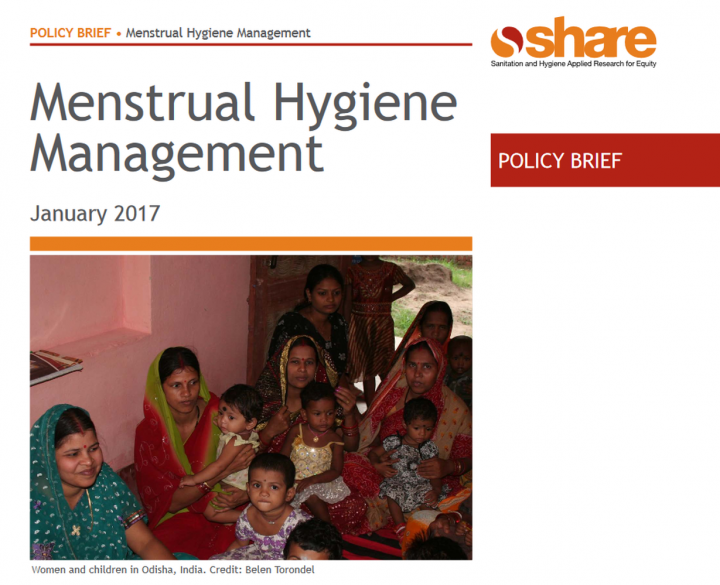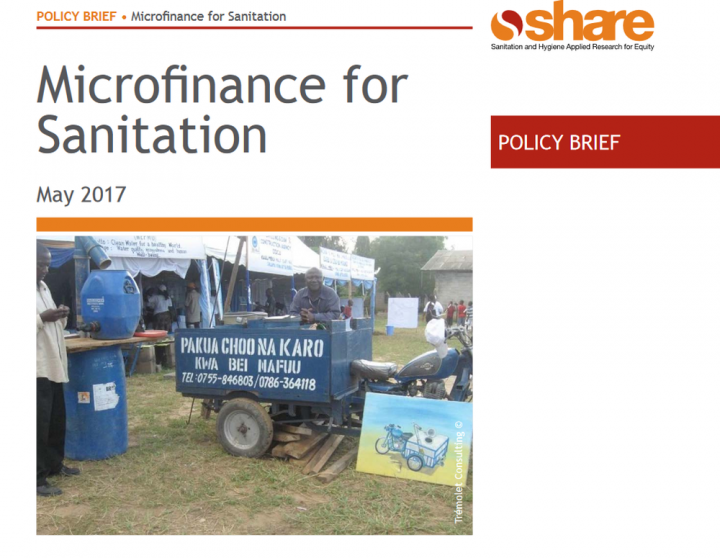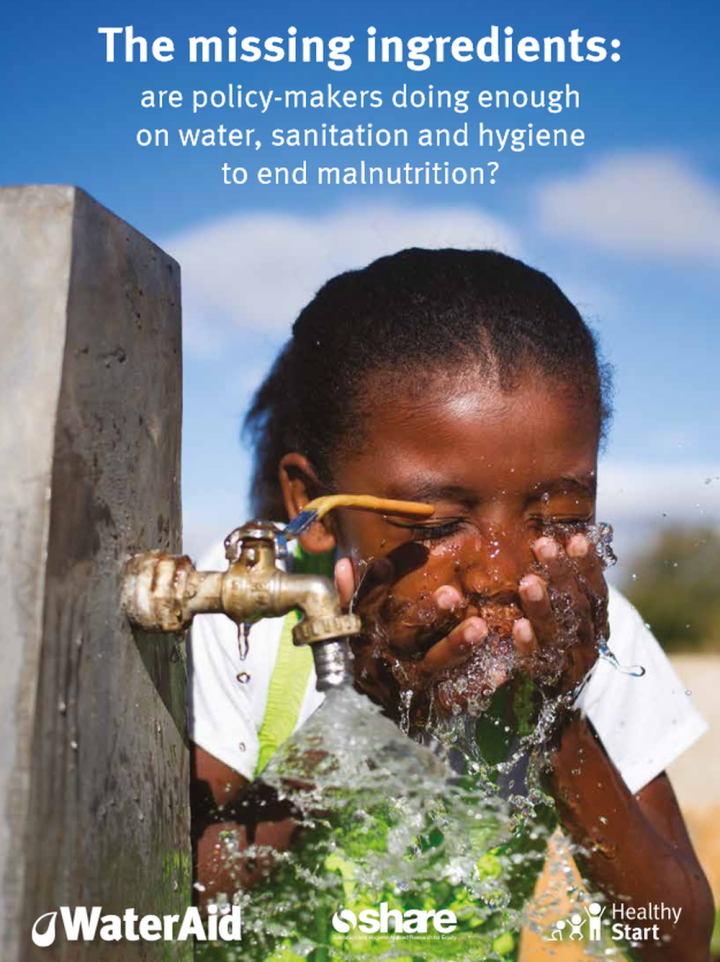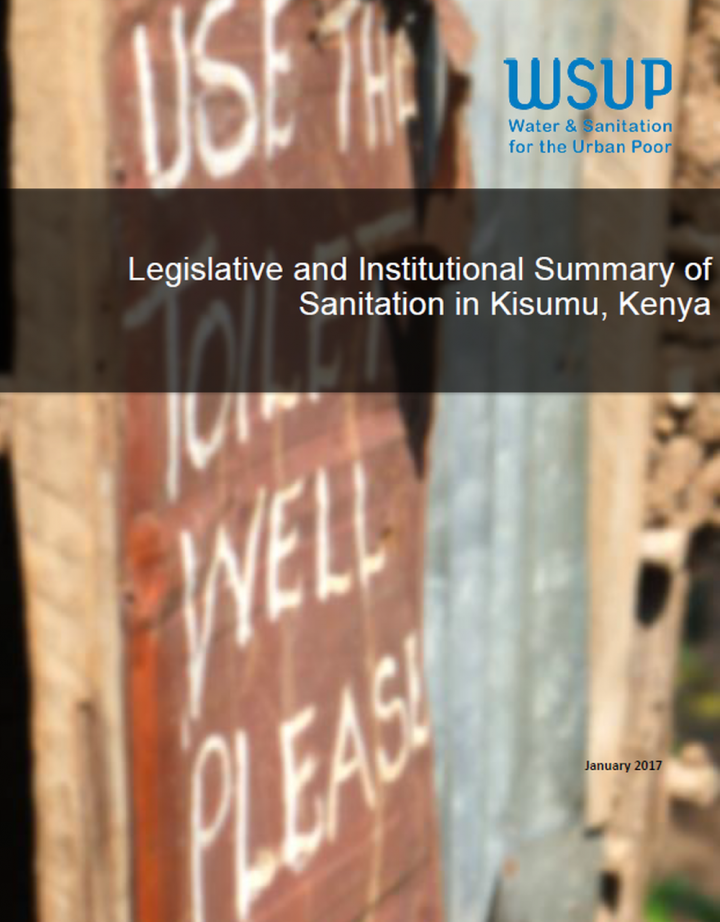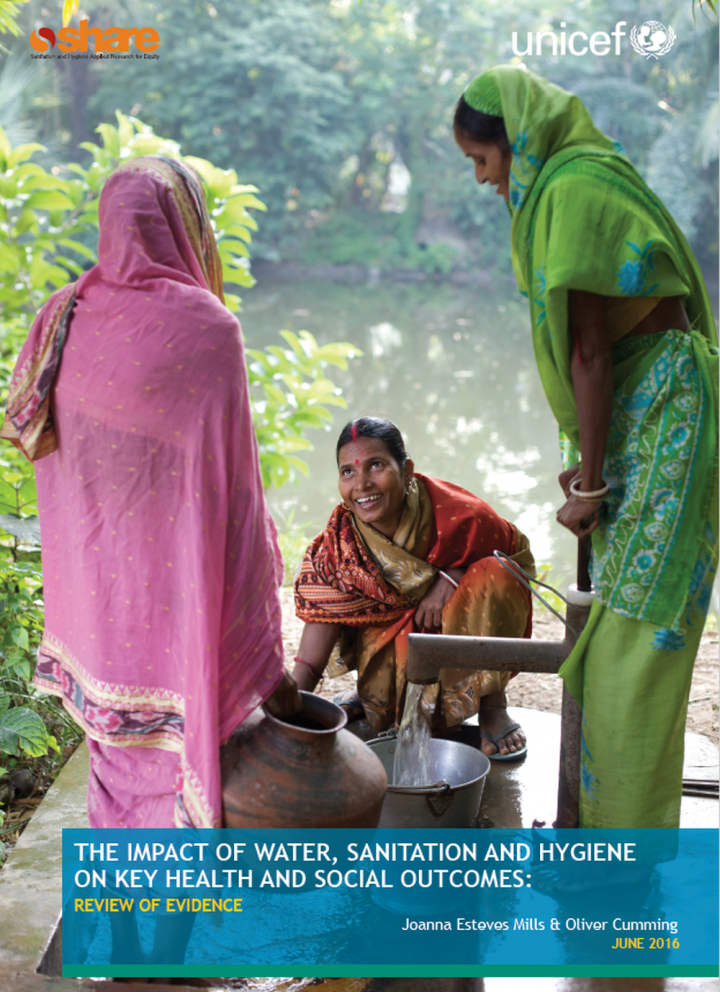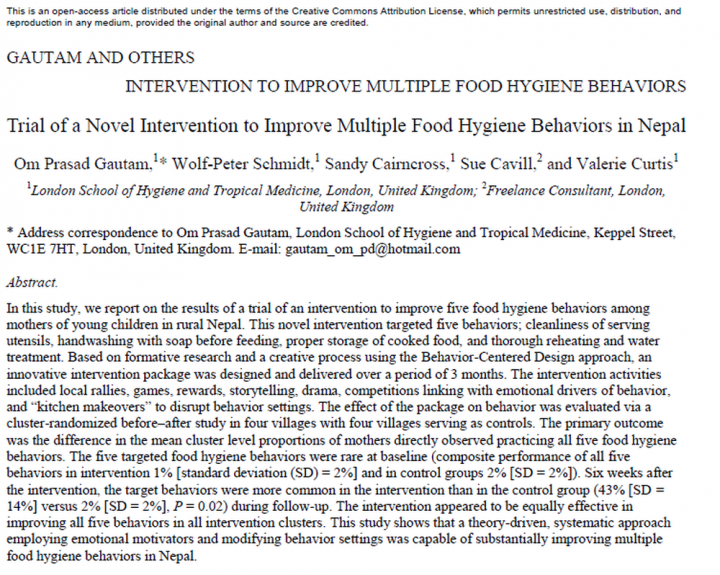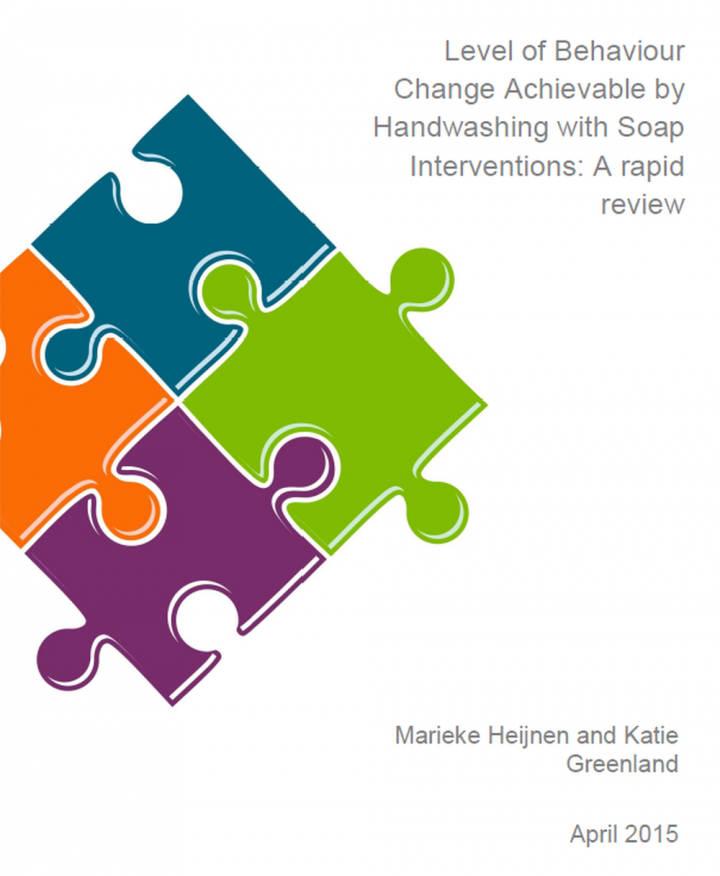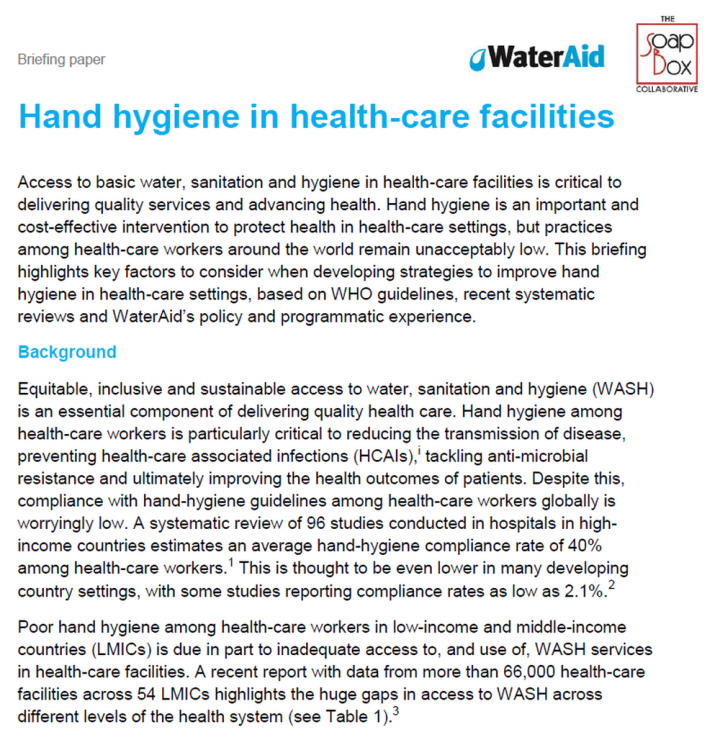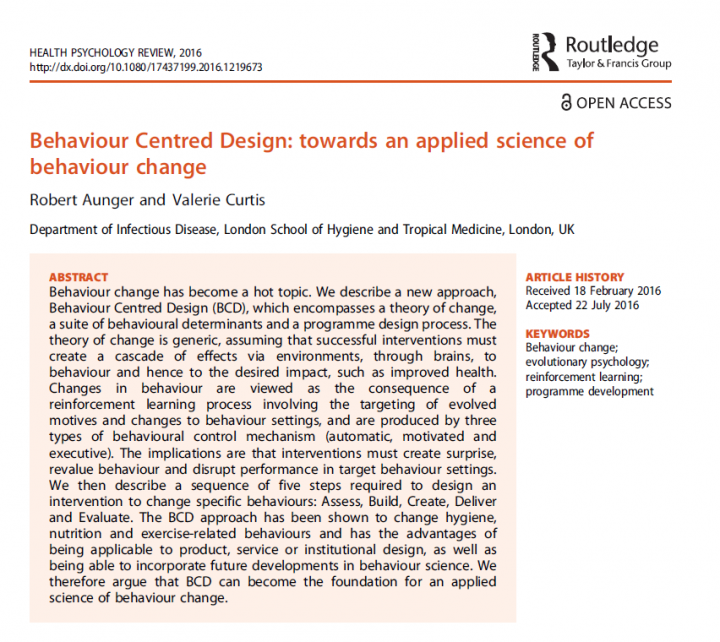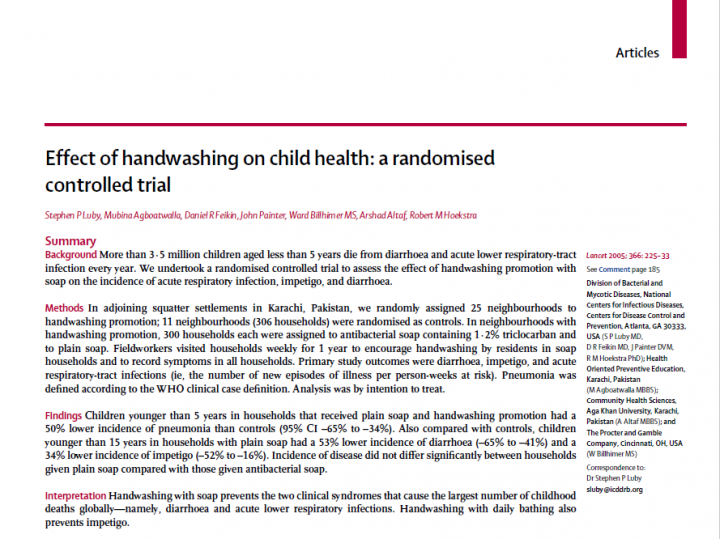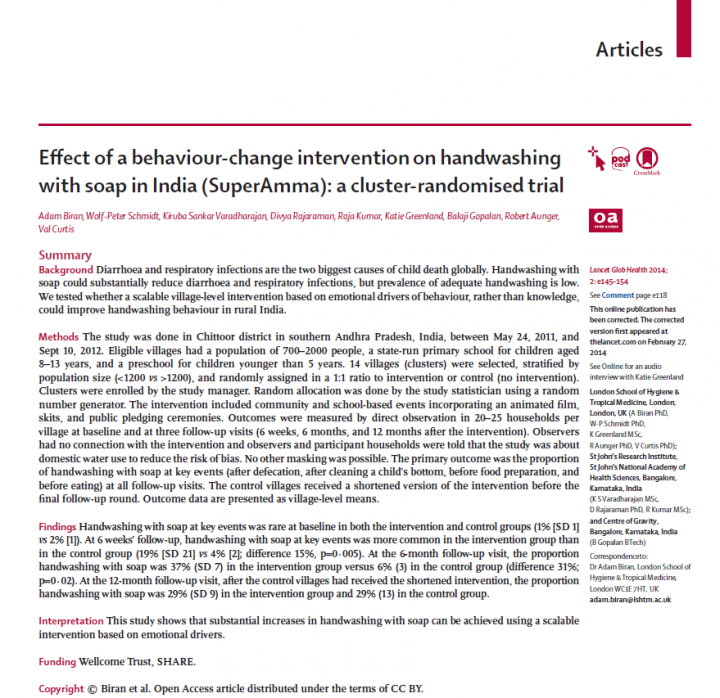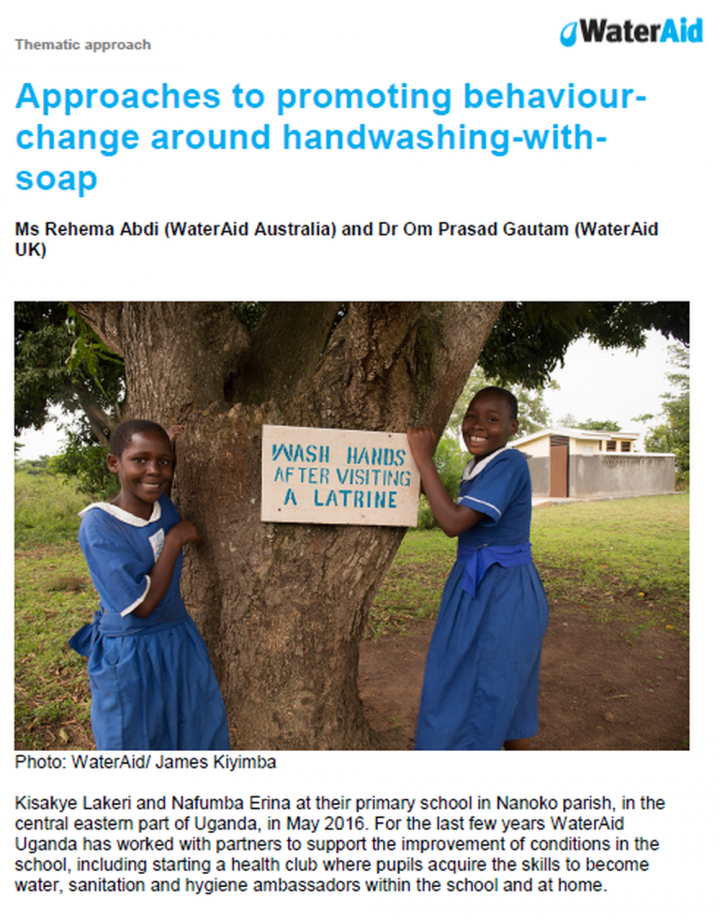Balls, E. (2017) Menstrual Hygiene Management Policy Brief
This policy brief summarises previous research on MHM and highlights the SHARE Consortium’s contribution to this important topic. It then defines knowledge gaps which still exist and sets out clear recommendations for improving policy and programmes globally.
Durrans, S. (2017) Microfinance for Sanitation Policy Brief
This policy brief highlights the SHARE Consortium’s contribution to the knowledge base on microfinance for sanitation. The brief defines sanitation microfinance and summarises research conducted in India and Tanzania. It then discusses the research gaps that still exist and provides recommendations for improving policies and programmes on microfinance for sanitation globally.
Chitty, A., Wilson-Jones, M., Jones, D. (2016) The Missing Ingredients Are Policy-Makers Doing Enough on Water, Sanitation and Hygiene to End Malnutrition?
This report, conducted by SHARE and WaterAid, highlights why water, sanitation and hygiene are essential for nutrition. Through an analysis of national nutrition plans and policies in 13 countries, the research highlights the extent to which WASH is embedded at policy level and where and how improvements must be made.
Ulrich, L. (2012) Reportage photo sur la construction d’installations ecosan à Dayet Ifrah (in French) Photo report on the construction of ecosan facilities at Dayet Ifrah
French title: Reportage photo sur la construction d’installations ecosan à Dayet Ifrah
Owako, E., Kanga, S. (2017) Legislative and Institutional Summary of Sanitation in Kisumu, Kenya
The purpose of this study exercise is to identify and summarise the current national and county level sanitation situation in Kenya. This document will inform WSUP’s ongoing work in cities such as Kisumu, and will be used a basis for further analysis of Kenya’s sanitation legislation and institutional responsibilities and mandates.
Mills, J. E., Cumming, O. (2016) The Impact of WASH on Key Health & Social Outcomes Review of Evidence
This evidence paper looks at 10 areas identified collaboratively with the United Nations Children’s Fund (UNICEF) on which WASH can plausibly have a strong impact: diarrhoea, nutrition, complementary food hygiene, female psychosocial stress, violence, maternal and newborn health, menstrual hygiene management, school attendance, oral vaccine performance, and neglected tropical diseases.
India Sanitation Coalition (2017) Business of Change: Corporates in sanitation
This compendium is an initial collection of case studies on sanitation initiatives, and highlights how companies are engaging in the sector and supporting the Swachh Bharat Mission (SBM) launched by Prime Minister Modi. These interventions show how CSR spends are increasingly being used in sanitation. It is very encouraging to see how these companies have developed thoughtful projects to support disadvantaged communities, often evoking innovation. This […]
Jacob, N., Saxena, S., Shahpuri, A., Nath, V. (2017) Swachh Bharat: Vision to Mission
The India Sanitation Coalition (ISC) and Sustainable Sanitation Alliance (SuSanA) are pleased to present this report of the Swachh Bharat Mission (SBM), two and a half years after its launch. This document captures the ideas from ISC partner experiences, as well as e-discussions on the India Chapter of the SuSanA platform. It builds on these with secondary research to present the status of SBM in […]
Heijnen, M., Greenland, K. (2015) Level of Behaviour Change Achievable by Handwashing with Soap Interventions: A rapid review
Evidence on Demand was requested by DFID to undertake a rapid desk-based study to assess the level of change in handwashing with soap that could be expected from a successful hygiene promotion intervention in a low or middle-income country setting. As part of this task, a summary of factors that may influence intervention outcomes and sustainability is provided.
WaterAid (2017) Hand hygiene in health-care facilities Briefing paper
Gautam, O. P., et.al. (2015) Complementary Food Hygiene: An overlooked opportunity in the WASH, nutrition and health sectors Policy Brief
Aunger, R., Curtis, V. (2016) Behaviour Centred Design: towards an applied science of behaviour change
Biran, A., et.al. (2009) The effect of a soap promotion and hygiene education campaign on handwashing behaviour in rural India: a cluster randomised trial
Objective: To investigate the effectiveness of a hygiene promotion intervention based on germ awareness in increasing handwashing with soap on key occasions (after faecal contact and before eating) in rural Indian households.
Luby, S. P., et.al. (2005) Effect of handwashing on child health: a randomised controlled trial
More than 3·5 million children aged less than 5 years die from diarrhoea and acute lower respiratory-tract infection every year. A randomised controlled trial had been undertaken to assess the effect of handwashing promotion with soap on the incidence of acute respiratory infection, impetigo, and diarrhoea.
Biran, A., et.al. (2014) Effect of a behaviour-change intervention on handwashing with soap in India (SuperAmma): a cluster-randomised trial
Diarrhoea and respiratory infections are the two biggest causes of child death globally. Handwashing with soap could substantially reduce diarrhoea and respiratory infections, but prevalence of adequate handwashing is low. Through this research it was tested whether a scalable village-level intervention based on emotional drivers of behaviour, rather than knowledge, could improve handwashing behaviour in rural India.
Abdi, R., Gautam, O.P. (2016) Approaches to promoting behaviour change around handwashing with soap
This paper seeks to improve understanding of approaches used to promote handwashing with soap, with a view to offering practical suggestions when selecting approaches.
WaterAid (2017) WASH and nutrition: why and how to integrate Briefing note
This note can be used as a practical guide for WaterAid country programmes on joint WASH and nutrition programming, implementation, monitoring and advocacy.
Simha, P., et al. (2017) Farmer attitudes and perceptions to the re–use of fertiliser products from resource–oriented sanitation systems The case of Vellore, South India
Abstract: Relatively little research has been conducted to date on farmer attitudes towards the use of fertilisers from resource–oriented sanitation systems. This study employed a psycho–sociological approach to identify factors that encourage, or discourage, negative and positive attitudes to human waste recycling among farmers in southern India. A survey involving face–to–face interviews was performed with 120 randomly sampled farmers, taking into account the following factors: gender, […]
